The Best Way to Cook and Serve Asparagus
Asparagus, known for its unique flavor and nutritional benefits, can be prepared in various ways to enhance its taste and texture. One of the best methods to cook and serve asparagus is by roasting it in the oven. Roasting brings out the natural sweetness of the vegetable and creates a tender yet slightly crispy texture that pairs beautifully with different seasonings. It's a simple yet delicious way to enjoy this versatile vegetable.
If you prefer a quicker cooking method, sautéing asparagus on the stovetop is a great option. This technique allows you to cook the asparagus rapidly while preserving its vibrant green color and adding a touch of caramelization for extra flavor. Sautéed asparagus makes a tasty side dish that can complement a variety of main courses.
For those who love the smoky flavor of grilled vegetables, mastering the art of grilling asparagus is a must. Whether using an outdoor grill or a grill pan, grilling asparagus imparts a charred flavor that enhances the vegetable's earthy taste. It's a fantastic choice for summer cookouts or adding a unique twist to your meals.
Steaming is another gentle method of cooking asparagus that helps retain its nutrients and crisp texture. By steaming asparagus, you can create a simple yet healthy side dish that can be seasoned in various ways to suit your taste preferences. It's a quick and easy way to enjoy this nutritious vegetable.
When looking for creative ways to incorporate asparagus into your meals, consider making an asparagus salad. By combining fresh ingredients like cherry tomatoes, feta cheese, and a balsamic vinaigrette, you can create a light and refreshing dish that showcases the versatility of asparagus. This salad is perfect for a light lunch or as a side dish for dinner.
For a comforting and flavorful meal, try making creamy asparagus soup. By blending cooked asparagus spears with broth and seasonings, you can create a rich and creamy soup that highlights the delicate flavor of the vegetable. It's a great option for a cozy night in or a light lunch.
Asparagus can also be incorporated into pasta dishes for a satisfying meal. Whether added to creamy fettuccine Alfredo or lemony spaghetti, the addition of asparagus brings a fresh and vibrant element to the dish. The combination of the vegetable with savory sauces and al dente noodles creates a delicious and filling meal.
When it comes to appetizers, there are endless possibilities with asparagus. From bacon-wrapped asparagus bundles to asparagus and goat cheese tarts, these creative appetizers are perfect for entertaining guests or enjoying as a snack. Asparagus bruschetta is another delightful option that showcases the vegetable in a flavorful and elegant way.
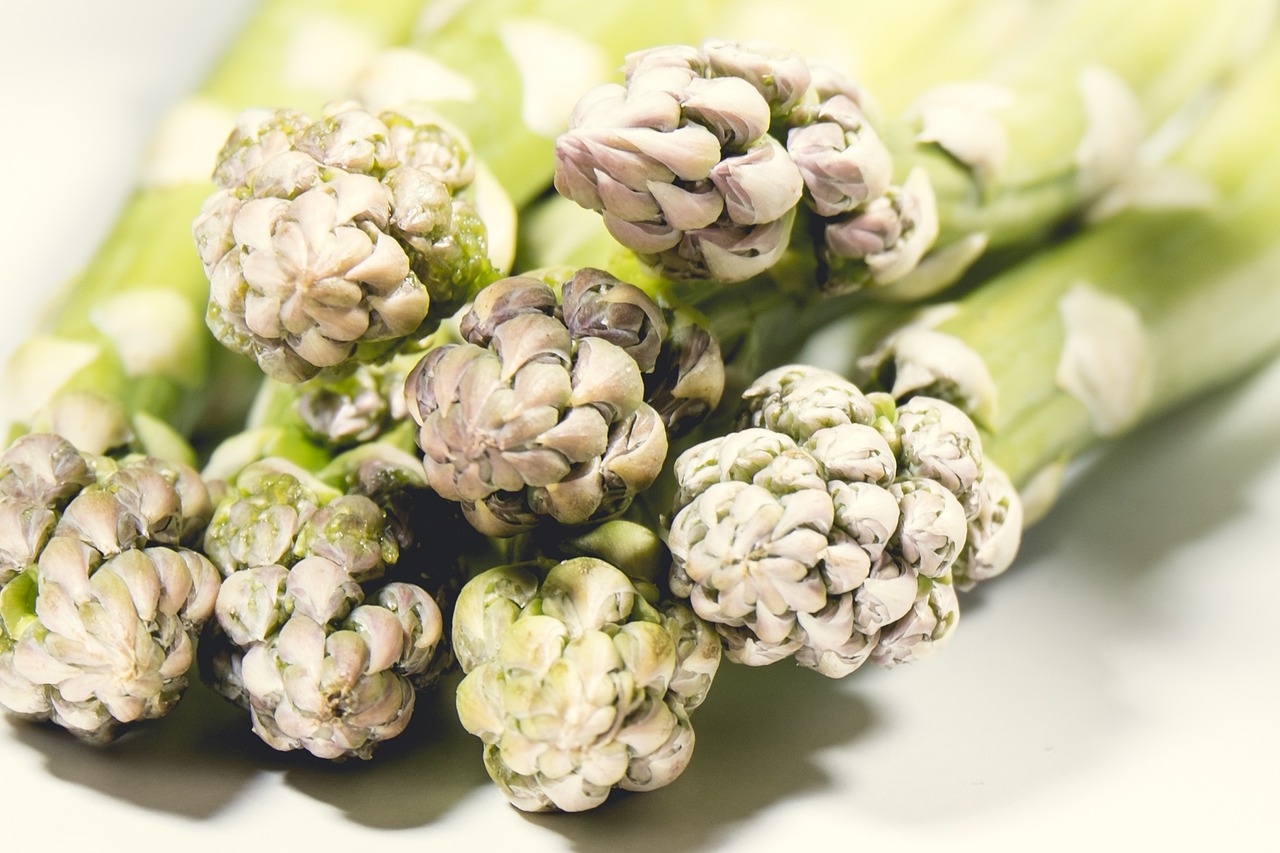
Roasting Asparagus
Roasting asparagus is a fantastic way to bring out the vegetable's natural sweetness and create a deliciously tender yet slightly crispy texture. To roast asparagus, start by preheating your oven to 400°F (200°C). Wash the asparagus spears and trim off the tough ends. Place the spears on a baking sheet in a single layer and drizzle with olive oil, then season with salt, pepper, and any other desired seasonings like garlic powder or lemon zest.
For an extra burst of flavor, you can also add grated Parmesan cheese or breadcrumbs on top of the asparagus before roasting. Roast in the oven for about 15-20 minutes, depending on the thickness of the spears, until they are tender and slightly caramelized. The high heat of the oven will help to concentrate the flavors and bring out the natural sweetness of the asparagus.
Roasted asparagus pairs well with a variety of dishes and can be served as a simple side or incorporated into salads, pastas, or even enjoyed on its own as a tasty snack. The roasting process intensifies the flavors of the asparagus, making it a versatile ingredient that can elevate any meal.
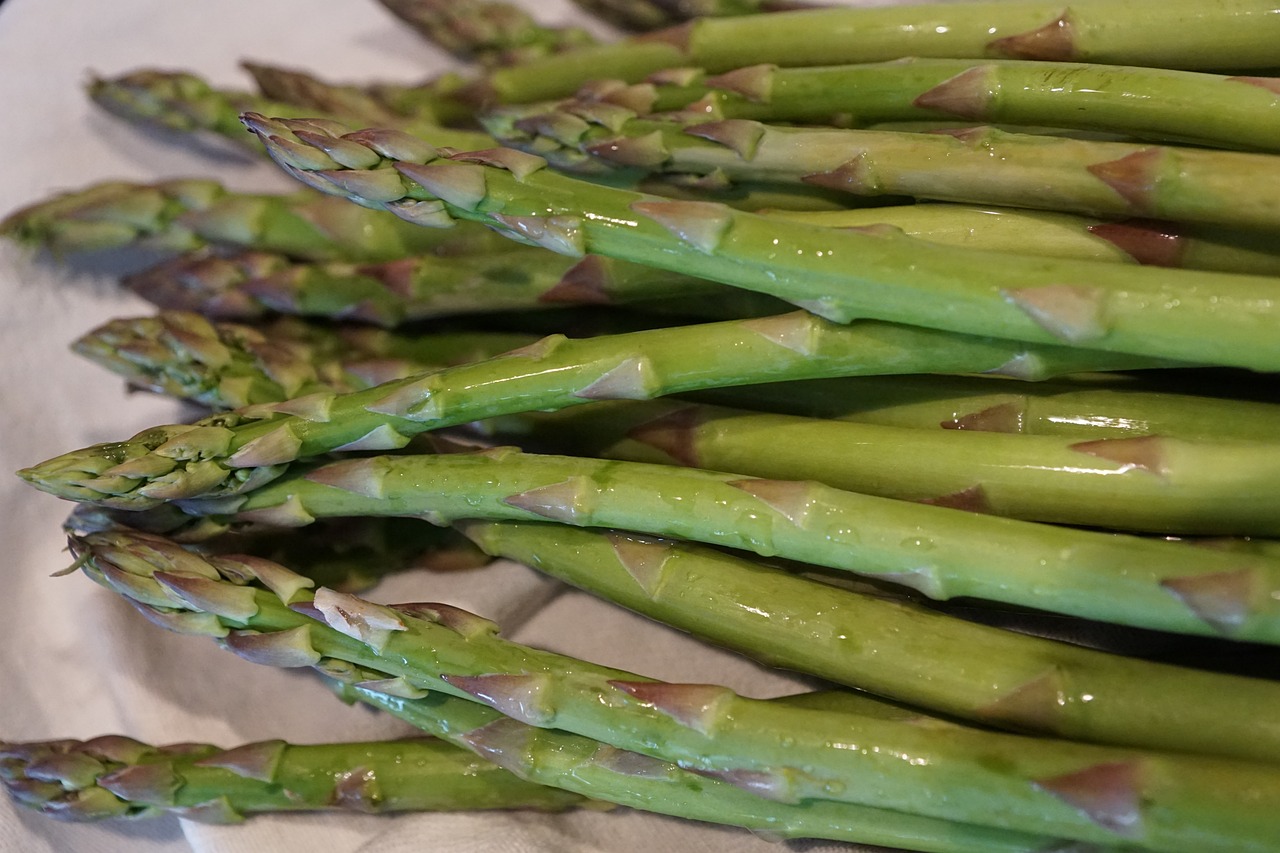
Sautéing Asparagus
Discover various methods and tips for cooking and serving asparagus to enhance its flavor and texture, making it a delicious and nutritious addition to your meals.
Sautéing asparagus is a quick and easy way to cook this versatile vegetable while preserving its vibrant color and adding a touch of caramelization for extra flavor. To sauté asparagus, start by washing and trimming the spears. Heat a pan over medium-high heat and add a bit of olive oil or butter. Once the pan is hot, add the asparagus spears and season with salt, pepper, and any other desired seasonings like garlic or lemon zest. Sauté for a few minutes until the asparagus is tender but still slightly crisp. The result is a delicious side dish that pairs well with a variety of main courses.
If you want to elevate your sautéed asparagus, consider adding ingredients like toasted almonds, parmesan cheese, or a splash of balsamic vinegar for extra flavor. The caramelization that occurs during sautéing enhances the natural sweetness of the asparagus, creating a delightful contrast of flavors and textures in each bite.
Remember, sautéing allows you to cook asparagus quickly while maintaining its nutrients and freshness. It's a versatile cooking method that can be easily adapted to suit your taste preferences, whether you prefer a simple garlic and butter sauté or a more elaborate dish with multiple ingredients.
Next time you're looking for a delicious and easy way to enjoy asparagus, try sautéing it to perfection and savoring the delightful flavors that this cooking method brings out.

Grilling Asparagus
Grilling asparagus is an excellent way to elevate the vegetable's flavor profile with a smoky charred essence that adds depth to its natural earthy taste. The process of grilling involves cooking the asparagus over direct heat, whether on an outdoor grill or a grill pan, to achieve those coveted grill marks and a slightly crispy texture while maintaining a tender interior.
Before grilling, it's essential to prepare the asparagus properly. Trim the tough ends of the spears and toss them with olive oil, salt, and pepper to enhance their taste. You can also experiment with adding additional seasonings like garlic powder, lemon zest, or Parmesan cheese to complement the smoky notes from the grill.
When grilling the asparagus, make sure to place the spears perpendicular to the grill grates to prevent them from falling through. Cook them for a few minutes on each side until they are tender but still have a slight crunch. The high heat of the grill will caramelize the natural sugars in the asparagus, intensifying their sweetness and creating a delicious charred flavor.
Grilled asparagus pairs well with a variety of dishes and can be served as a side or incorporated into salads, pasta, or even as an appetizer. The smokiness from the grill adds a unique dimension to the vegetable, making it a versatile ingredient that can enhance any meal with its robust flavor profile.
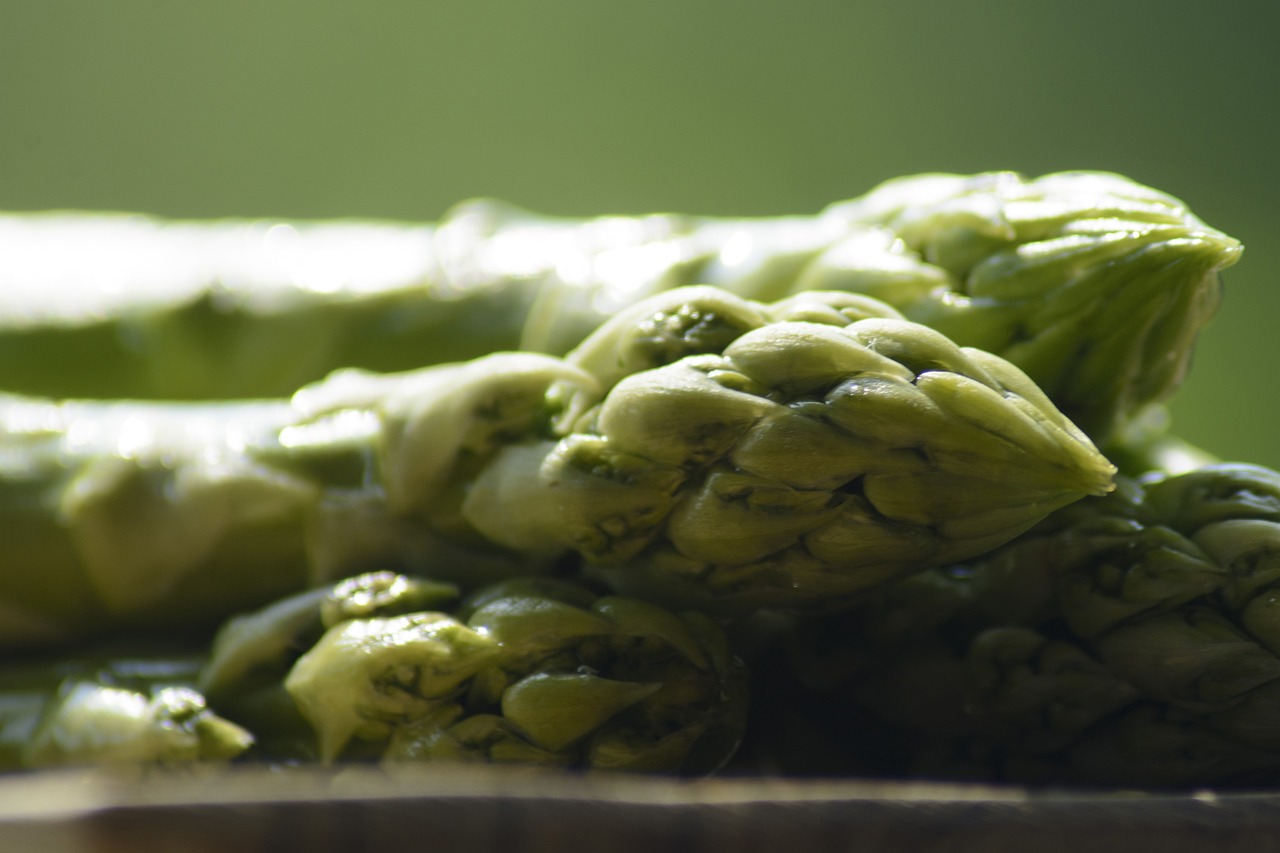
Steaming Asparagus
When it comes to cooking asparagus, steaming is a gentle and effective method that helps retain the vegetable's nutrients and crisp texture. Steaming involves cooking the asparagus over boiling water, allowing it to cook through without becoming mushy or losing its vibrant green color. This technique is perfect for those looking for a simple yet healthy way to enjoy asparagus, as it requires minimal seasoning and preserves the natural flavors of the vegetable.
To steam asparagus, start by trimming the woody ends of the spears and washing them thoroughly. Then, bring a pot of water to a boil and place a steamer basket or a colander over the pot. Add the asparagus to the steamer basket in a single layer, cover with a lid, and steam for about 3-5 minutes, depending on the thickness of the spears. You'll know the asparagus is done when it turns bright green and is tender yet still slightly crisp.
Steamed asparagus can be enjoyed on its own with a sprinkle of salt and a drizzle of olive oil, or you can get creative with seasonings such as lemon zest, garlic, or herbs like dill or parsley. This versatile vegetable can also be incorporated into salads, pasta dishes, or served as a side to complement a variety of main courses. The gentle cooking method of steaming allows the unique flavor of asparagus to shine through, making it a delicious and nutritious addition to any meal.
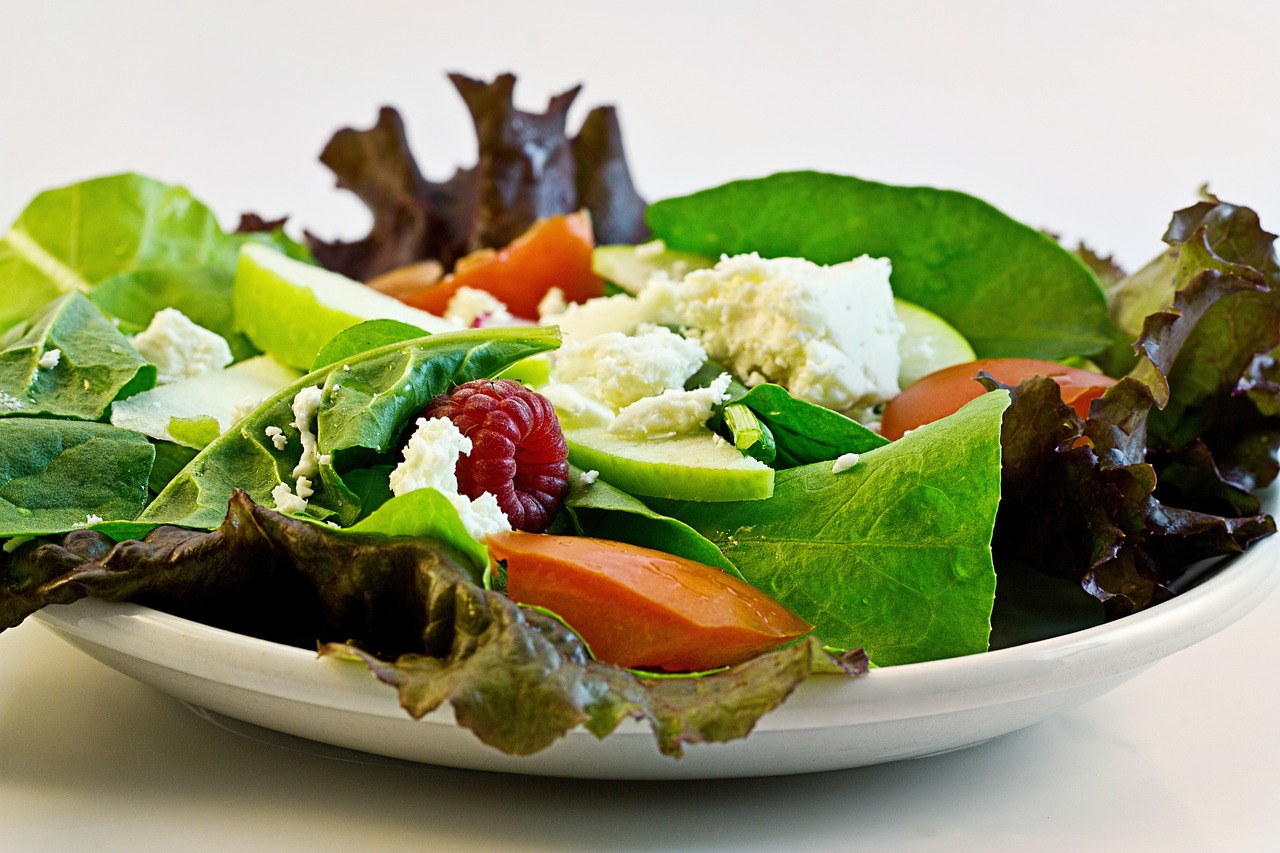
Asparagus Salad
Asparagus salad is a versatile and refreshing dish that allows the unique flavor of asparagus to shine through. When preparing an asparagus salad, it's important to start with fresh asparagus spears that are crisp and vibrant in color. To enhance the taste of the salad, consider pairing the asparagus with complementary ingredients such as cherry tomatoes, feta cheese, and a tangy balsamic vinaigrette.
One popular way to serve asparagus salad is by blanching the asparagus briefly to soften it slightly while still maintaining a satisfying crunch. This method helps to bring out the natural sweetness of the asparagus without overpowering its delicate flavor. Additionally, blanching can help preserve the bright green color of the asparagus, making the salad visually appealing.
For added texture and flavor, you can incorporate ingredients like toasted nuts or seeds, such as pine nuts or sunflower seeds, to provide a crunchy contrast to the tender asparagus. Fresh herbs like parsley or basil can also be used to add a pop of freshness to the salad, enhancing its overall taste profile.
When serving asparagus salad, consider garnishing it with a sprinkle of freshly grated Parmesan cheese or a drizzle of high-quality olive oil for an extra layer of richness. This simple yet elegant dish is perfect for a light lunch or as a side dish alongside grilled fish or chicken.
Experiment with different variations of asparagus salad by adding ingredients like avocado slices, grilled shrimp, or quinoa for a more substantial meal. The beauty of asparagus salad lies in its adaptability, allowing you to customize it to suit your taste preferences and dietary needs.

Asparagus Soup
When it comes to comfort food with a touch of elegance, is a delightful choice. This creamy concoction combines the earthy flavors of asparagus with the richness of broth and seasonings, resulting in a bowl of warmth and nutrition.
To prepare a delicious , start by gently cooking asparagus spears in a pot with a splash of olive oil until they are tender. Then, add vegetable or chicken broth to the pot and simmer the mixture until the flavors meld together.
For a velvety texture, you can blend the cooked asparagus and broth until smooth, creating a luscious base for your soup. Season the soup with a hint of garlic, a sprinkle of salt and pepper, and perhaps a touch of cream for added richness.
When serving , consider garnishing it with a drizzle of olive oil, a dollop of sour cream, or a sprinkle of fresh herbs like chives or parsley. These finishing touches not only enhance the visual appeal of the dish but also add layers of flavor to each spoonful.
Whether enjoyed as a comforting meal on a chilly evening or served as a starter at a dinner party, is a versatile dish that never fails to impress. Its subtle yet distinct taste is sure to win over even the most discerning palates.

Asparagus Pasta
When it comes to incorporating asparagus into pasta dishes, the possibilities are endless. Asparagus adds a unique flavor and texture to pasta, creating a dish that is both satisfying and nutritious. One popular way to enjoy asparagus pasta is by preparing creamy fettuccine Alfredo with tender asparagus spears. The creamy sauce complements the earthy taste of the asparagus, resulting in a decadent meal that is sure to please your taste buds.
Alternatively, you can opt for a lighter option by making lemony spaghetti with asparagus. The bright, citrusy flavors of the lemon perfectly complement the freshness of the asparagus, creating a refreshing and vibrant pasta dish. The asparagus adds a lovely crunch to the noodles, making each bite a delightful experience for your palate.
When cooking asparagus pasta, it's essential to blanch the asparagus before adding it to the dish. This helps preserve the vibrant green color of the asparagus and ensures that it remains tender yet slightly crisp. Additionally, consider adding some grated Parmesan cheese on top of the pasta for a savory finish that enhances the overall flavor profile of the dish.
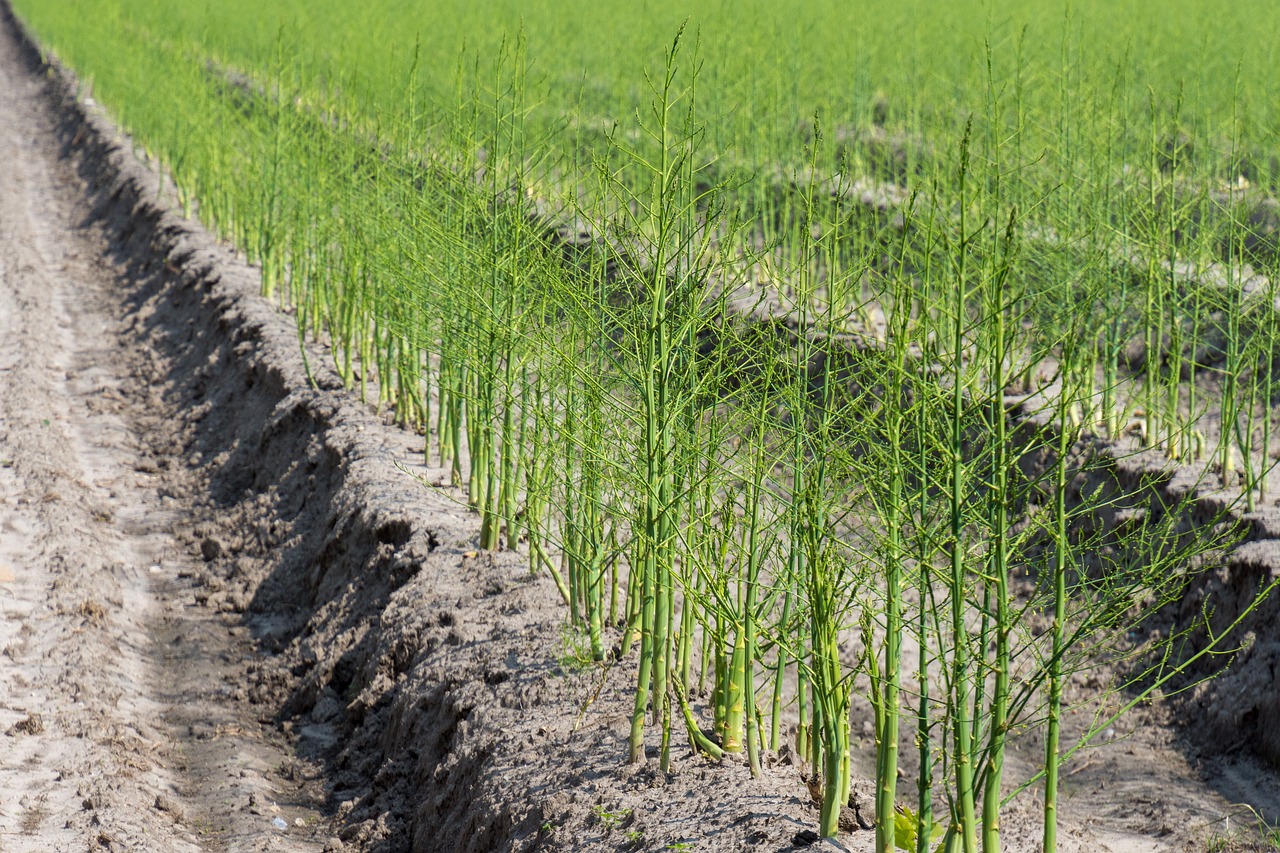
Asparagus Appetizers
When it comes to appetizers, asparagus offers a versatile and elegant option that can impress your guests with its unique flavor and presentation. One popular choice is the bacon-wrapped asparagus bundles, where crisp bacon wraps around tender asparagus spears, creating a delightful combination of savory and earthy flavors. These bundles can be easily prepared and are perfect for serving at parties or gatherings, adding a touch of sophistication to your appetizer spread.
For a more sophisticated twist, consider preparing asparagus and goat cheese tarts. These bite-sized treats feature a creamy goat cheese filling nestled on a flaky pastry crust, topped with tender asparagus spears for a burst of freshness. The combination of tangy goat cheese and crisp asparagus creates a harmonious blend of flavors that will leave your guests coming back for more.
If you're looking for a lighter option, try making asparagus bruschetta. This simple yet elegant appetizer features grilled or roasted asparagus piled on top of crusty bread slices, drizzled with balsamic glaze and sprinkled with fresh herbs. The crunch of the bread, the tender asparagus, and the sweet tang of the balsamic glaze create a delightful medley of textures and flavors that is sure to tantalize your taste buds.
Frequently Asked Questions
- Can I eat asparagus raw?
While asparagus is commonly cooked before consumption, it is safe to eat raw. However, raw asparagus can have a tough texture and a slightly bitter taste compared to when it is cooked. If you enjoy raw vegetables, you can try thinly slicing or shaving the asparagus to use in salads or as a garnish.
- How do I store asparagus to keep it fresh?
To keep asparagus fresh, trim the ends and place the spears upright in a container with about an inch of water. Cover the tops loosely with a plastic bag and store in the refrigerator. Alternatively, you can wrap the ends in a damp paper towel and store them in a plastic bag in the vegetable crisper.
- Is the thickness of asparagus spears important for cooking?
The thickness of asparagus spears can affect the cooking time and texture. Thicker spears will take longer to cook and are better suited for grilling or roasting, while thinner spears cook quickly and are ideal for sautéing or steaming. Choose spears that are firm, with tightly closed tips, for the best flavor and texture.
- Can I freeze asparagus?
Yes, you can freeze asparagus to preserve it for later use. Blanch the spears in boiling water for a few minutes, then transfer them to an ice bath to stop the cooking process. Drain and pat dry before placing them in a freezer-safe bag or container. Frozen asparagus can be used in soups, stir-fries, or casseroles.
- What are the health benefits of asparagus?
Asparagus is a nutrient-dense vegetable that is low in calories and high in vitamins, minerals, and antioxidants. It is a good source of fiber, folate, vitamin K, and vitamin C. Asparagus may support digestive health, heart health, and weight management, making it a valuable addition to a balanced diet.



















